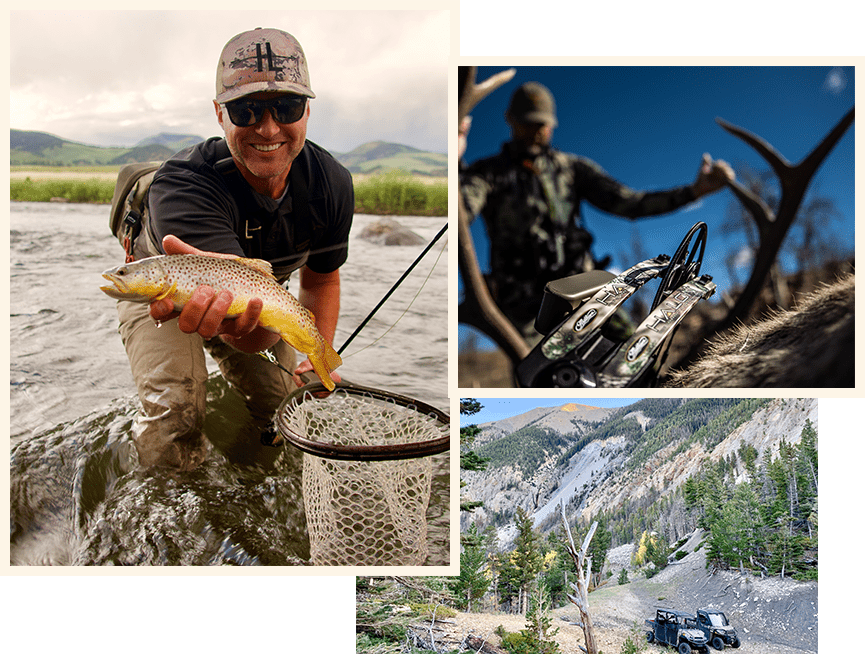Getting the Edge with Strike Indicators – Sporting Properties For Sale
Let’s face it, everyone can use a little “edge” from time to time. If you’re a golfer, maybe your edge is a high-tech, perfectly balanced putter. If you’re a hunter, it might be a scope with observatory-quality optics. And if you’re a nymph fisherman, it may well be a lowly, but indispensable strike indicator.
We all know the jokes (most frequently made by those who don’t use them) that strike indicators are nothing but glorified bobbers, and there is indeed some truth to the claim. A strike indicator is usually designed for the same general purposes as a classic red-and-white plastic bobber: to float, to be visible and to provide some sensitivity to the take of a fish. Build these qualities into a strike indicator that is relatively easy to cast on a flyfisher’s leader and you have the making of a flyfishing revolution.
These days, flyfishers who want to try nymph fishing will find almost as much variety in strike indicators as they’ll find in new models of automobiles. As with automobiles, choosing between them can be a bewildering task, but a few general tips fly fishingshould help with the selection process.
1. Ease of placement should rate near the top of the criteria list for anglers, especially when it is 20 degrees and the wind is howling. Some indicators need to be threaded onto the leader before the fly is tied on, which is fine when putting it on, but a major task when taking it off. Look for indicators that can slip on and off easily with a fly in place, such as any indicator with a slot, or a small loop through which the leader can be doubled and “looped over” the indicator.
2. Similarly, the ability to move the indicator easily up and down the leader is important, as adjustments will need to fish deeper or shallower water. The indicator should adjust easily, but not too easily, as a loose grip on the leader will cause the indicator to slip down towards the fly during casting. As an aside, a general rule of thumb is to place the indicator twice the depth of the water you’re fishing, but this is only a guideline. Adjust as necessary to get the nymph to the depth you want.
3. Good castability can make the difference between a fun day of lots of fish or a frustrating day of lots of tangles. Yarn indicators are remarkably sensitive, but if too bulky will cast with all the grace of a #4 Stimulator. Smaller indicators usually have much less wind resistance than larger indicators, but may be too small to suspend a nymph or to be seen easily.
4. Usually, the indicator should be just large enough to suspend the nymph and any additional weight on your leader. Larger indicators will be hard to cast and smaller indicators will sink like the Titanic.
5. Indicator materials can vary greatly. As long as they float well, it makes little difference whether you are using polypropelene yarn, plastic, foam or cork indicators. Even a high-floating dry fly can make an excellent indicator, but it comes up short regarding Criteria #2, the ability to move it up and down the leader.
6. Color is largely a matter of personal preference. Many prefer bright pink, orange or chartreuse colors, but black or white indicators have their followers too, especially if the fish are wary of bright colors. Lighting conditions can also make some colors a better choice on bright days, other colors on cloudy days, etc.
No matter what type of indicator is chosen, all will require concentration in order to fish with them well. Indicators vary in sensitivity, and only personal trial and error will determine which ones work best with your eyesight and “feel”. The indicator simply signals what is happening with your nymph below the surface, so any unnatural slowing (sometimes speeding) or stopping of the indicator should cry out “set the hook!” Much of the time the nymph will have merely ticked a rock on the bottom, but more often than you might imagine, you’ll be connected to a throbbing trout that didn’t care whether you were using an indicator or not. And as you release the fat fish back into the river, you’ll not care if anyone else thinks that you’re “bobber fishing,” either.


